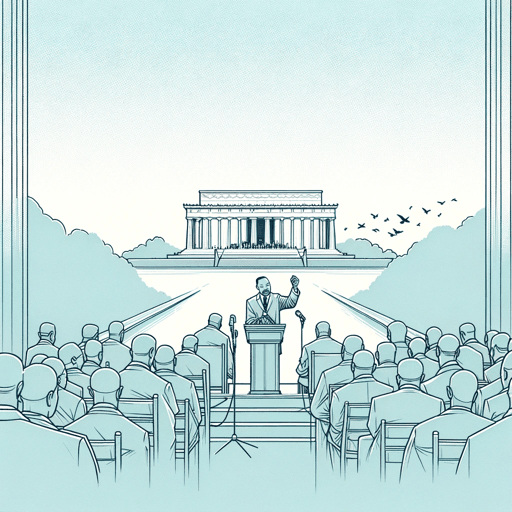28 pages • 56 minutes read
Martin Luther King Jr.I've Been to the Mountaintop
Nonfiction | Essay / Speech | Adult | Published in 1968A modern alternative to SparkNotes and CliffsNotes, SuperSummary offers high-quality Study Guides with detailed chapter summaries and analysis of major themes, characters, and more.
Symbols & Motifs
The Mountaintop and the Promised Land
In mentioning the “Promised Land” and the “mountaintop,” King draws parallels to the Biblical narrative of Moses leading the Israelites out of slavery towards Canaan, a land of freedom and prosperity. In this context, the Promised Land symbolizes the goal of the civil rights movement: a future devoid of discrimination and segregation, where African Americans enjoy the full rights and privileges of citizenship. The phrase frames the movement’s aspirations as a tangible destination, while the image of the mountaintop suggests how close that destination is: While Black Americans have not yet reached the Promised Land, King can see it on the horizon. King’s remark that he might not personally reach the Promised Land—an allusion to Moses, who delivered his people to Canaan but did not enter it himself—proved prophetic in light of his assassination the following day.
Notably, the image of the mountaintop and the Promised Land bookend the speech and evolve over the course of it. In King’s opening overview of human history, he imagines both overlooking the Promised Land and standing on a mountaintop (specifically, Mount Olympus). In both cases, however, he says that he “would not stop there” (Paragraph 2 and 3).
Related Titles
By Martin Luther King Jr.






